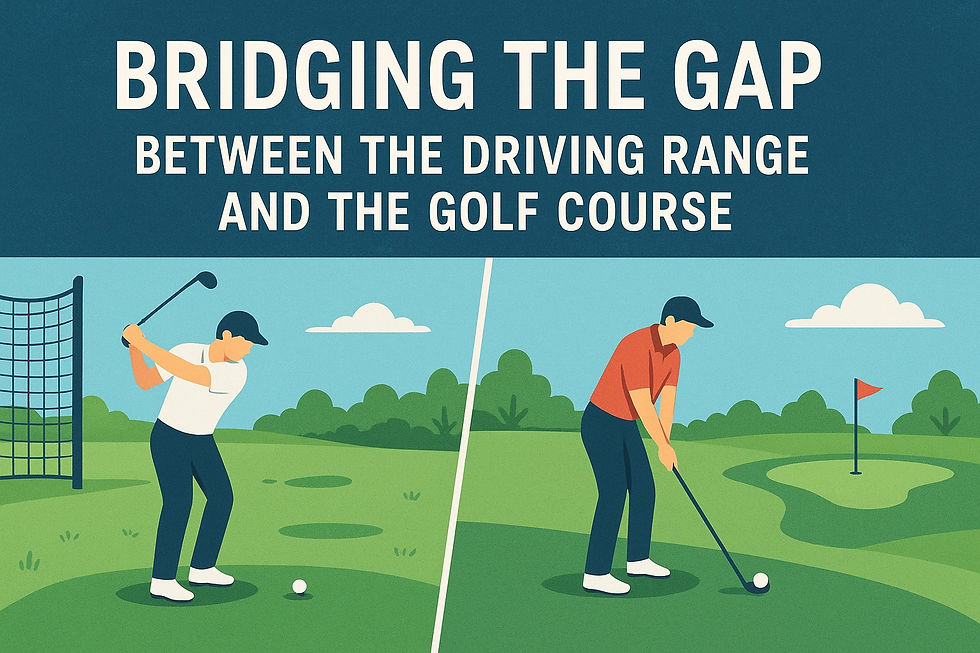Bridging the Gap Between the Driving Range and the Golf Course
- Eric J. Mac Donald

- Aug 16
- 2 min read

One of the biggest challenges golfers face is transferring the success they find on the driving range to the actual golf course. It’s a story I hear every week: “I hit it great on the range, but once I got out on the course, everything fell apart.”
The truth is, this isn’t a swing problem—it’s a training environment problem. Most golfers practice in a way that doesn’t simulate the decisions, pressures, and variability of an actual round of golf. If your range time doesn’t look and feel like the course, then it’s no surprise your game doesn’t transfer.
Here are a few key ways to bridge that gap:
1. Stop Raking and Ripping
On the range, it’s easy to fall into the “rake and rip” pattern: drag over a ball, hit it, repeat. This builds rhythm but doesn’t build adaptability. Instead, step away between each shot, go through your pre-shot routine, and change targets. Train the way you play.
2. Randomize Your Clubs
Golf is never 20 consecutive 7-irons. On the course, you constantly switch between drivers, wedges, and mid-irons. Practice with the same variety. After a drive, hit an iron into a “green” target, then a wedge, then a chip. This forces your brain and body to adapt like they do in real play.
3. Add Pressure
On the course, every shot counts. On the range, none of them do—unless you create consequences. Set goals: “Hit 7 out of 10 drives between the two poles” or “Land 5 wedges inside the circle.” Miss the goal? Start over. Pressure practice prepares you for pressure play.
4. Play Holes on the Range
Pick a course you know well and “play” it on the range. Visualize the hole, hit the drive, then estimate your next shot and hit that club. This kind of mental rehearsal makes your practice time directly relevant to the golf course.
5. Finish Like You’re on 18
Too many players quit when they’re tired or after a bad shot. On the course, you don’t have that choice. End practice by simulating the 18th hole of a tournament—driver, approach, putt. Train yourself to finish strong, no matter what came before.
The Payoff
When you start practicing this way, you’ll notice that your swing doesn’t just feel good on the range—it shows up under pressure on the course. By making your practice look more like play, you’ll finally start to see the consistency you’ve been chasing.













.jpg)



Comments